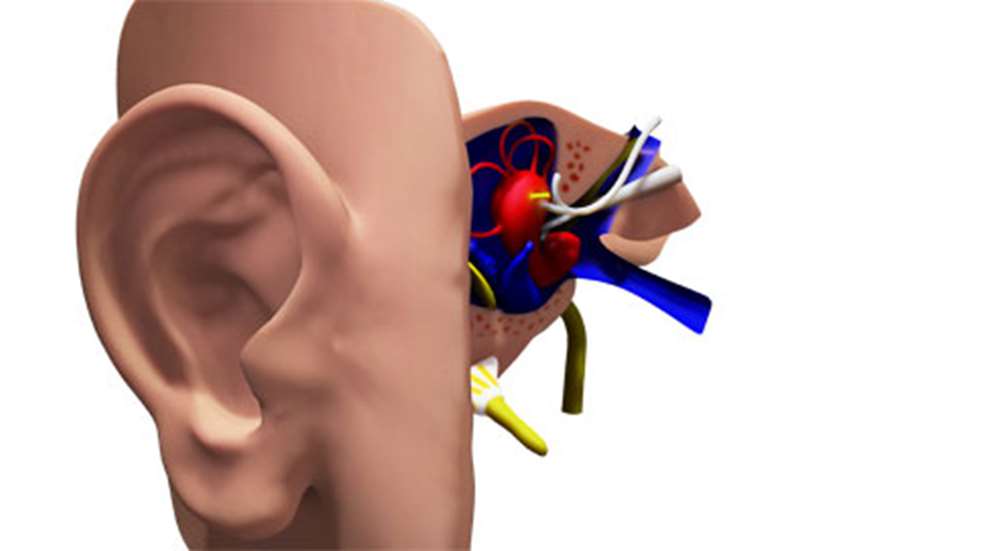
6/20/2013
In the hall outside the press room at the NRA Annual Meetings & Exhibits a few years ago there was a chance gathering of a half-dozen older gun writers; the hardcore, trigger-pulling kind, the guys who live for shooting. Well into the conversation somebody said “Huh?” for about the hundredth time and we all broke out laughing. Of course that led to the old joke, “What is an old shooter’s favorite word?” “WHAT?”
The dedicated shooters of my grandfather’s generation suffered severe hearing loss rather early in life because they never used any hearing protection. My father’s generation, those born during the Depression, picked up on the concept of ear protection, but too late to help. As well, it turns out that sticking cigarette filters in your ears is not the best protection. Folks my age, the 50-somethings, are probably the first generation to seriously use hearing protection when shooting. Even at that, I was an adult before I started using muffs regularly. My kids, and most of their generation, have used ear protection from day one.
The hard, cold truth is that if you live in America today you will suffer some noise-induced hearing loss in your lifetime. Loud music, city noise, concerts, movies, airplanes, lawn mowers, even your vacuum cleaner, they all add up. We can mitigate the degree of loss a great deal by wearing high-quality hearing protection when exposed to loud noises, but often the noise catches us unaware and is over before we act to plug our ears. Or, we simply don’t think much about it, until the cumulative effect rears its ugly head years later in the form of a high-frequency hearing loss.
Remember that rock concert you attended or the NASCAR race? Or that time your knucklehead brother-in-law shot right beside your ear in the duck blind? Remember how your ears rang for days after? That ringing was an indication of permanent damage. You probably didn’t notice anything at the time, but each one of those was a small deposit. It’s like putting pennies in a jar. You don’t notice much difference until, one day, you look and it’s full. Or in this case, you can’t understand what they are saying on the television.
If you are a shooter and spend a lot of time around guns, even if you are careful about hearing protection, you will probably experience a bit more hearing loss than the average citizen. Think about the times you removed your hearing protection in the range parking lot so you could have a conversation with your buddies.
Noise-induced hearing loss is caused in two ways. First is by a one-time exposure to an intense “impulse” sound, such as a gunshot. But it can also happen by continuous exposure to loud sounds over an extended period of time.
Sound is measured in units called decibels. On the decibel scale, an increase of 10 means that a sound is 10 times more intense, or powerful. To the human ear it will sound about twice as loud. Normal conversation is approximately 60 decibels; heavy city traffic is about 85 decibels. A gun shot might be as loud as 170 decibels. Hearing loss occurs when your ears are exposed to continuous noise above 85 decibels or impulse noise above 140 decibels. The louder the sound, the more damage it creates.
Hearing works in humans because of a series of events that change sound waves in the air into electrical signals, which the auditory nerve then carries to the brain. Sound waves enter the outer ear and travel through a narrow passageway called the ear canal, which leads to the eardrum. The eardrum vibrates from the sound waves and sends those vibrations to three tiny bones in the middle ear called the malleus, incus and stapes. The bones amplify the sound vibrations and send them to the inner ear, called the cochlea. The cochlea is shaped like a snail and is filled with fluid. There is an elastic membrane that runs through the cochlea, called the basilar membrane. The sound vibrations cause the fluid inside the cochlea to ripple, and a traveling wave forms along the basilar membrane. There are hair cells, which are sensory cells, on top of the membrane. They move with the waves. As the hair cells move up and down, their bristly structures bump up against an overlying membrane and tilt to one side. This tilting action causes channels on the surface of the bristles to open, allowing specific chemicals to come in, creating an electrical signal. The auditory nerve carries the electrical signal to the brain, which translates it into a “sound.”
The hair cells near the base of the cochlea detect higher-pitched sounds, while those nearer the apex or center detect lower-pitched sounds. Exposure to loud sounds causes damage to those hair cells, as well as to the auditory nerve. The hair cells at the base are closer to the source of the noise and more susceptible to damage, and the result from noise-induced damage is a hearing loss in the higher frequencies. That kind of hearing loss may be accompanied by tinnitus; a ringing, buzzing, or roaring in the ears or head.
With a high-frequency hearing loss the sounds a person hears may become distorted or muffled, and it may become difficult for the person to understand speech. Any background noise makes it worse, and speech becomes very difficult to understand. People often think we are anti-social or grumpy, and I suppose some of us are, but mostly we just can’t hear.
I have been living with this for a very long time. Time and again over the years I was told by audiologists that they would be happy to sell me hearing aids, but that I would likely not use them. They were right, as I tried them anyway. The problem with the analog technology available at the time, and with the hearing amplifiers sold for hunting, is that they were not tuned to a specific individual’s hearing loss and all noise was amplified across the entire frequency spectrum. But I didn’t need that. I only needed the sounds at the higher frequencies to be amplified. My hearing is normal at the low- to mid-range frequencies.
The hearing amplifiers drove me crazy. They made everything too loud and were incredibly annoying and distracting. I could wear them for a few hours at best and that depended on what I was doing. It always ended with me clawing them out of my ears and basking in the relief that followed. That is why your grandfather and father always seemed to forget to use their hearing aids. Being socially deaf was preferable to the anguish of using those amplifiers for long periods of time.
With the emerging digital technology, the hearing aids on the market today are a modern wonder. If you have suffered a hearing loss and have not explored the new technology, you owe it to your loved ones to do so. Forget that it will change your life; you cannot imagine how family relations will be improved. I can again be part of a conversation without constantly asking people to repeat themselves, which for reasons I could never understand, seemed to annoy them.
I am hearing things I forgot existed, like the rustling of winter beech leaves in a gentle breeze or birds singing. I could hear that with some of the hearing aids I used in the past, but the difference now is that rather than being distracted and disoriented by a full spectrum of amplified sound, the specially-tuned enhancers improve only my deficient range and I forget I am even using them. I put them in during the morning and have gone to bed with them in, because they are so unobtrusive that I forget to remove them.
The newest digital hearing aids are tiny and hide behind the ear so they are virtually unnoticeable by others. Mine are “open ear” design so that air travels easily through my ear canal, which means there is no “plugged up” feeling that you have with a lot of hearing aids.
With digital technology and using the results of a hearing test, the hearing aids are programmed exactly to a specific hearing loss. Only the sounds you need amplified or modified are affected. They can be further controlled to adapt to different conditions. For example, most modern, high-end digital hearing aids have multiple automatic programs. One is normal for everyday use in conversation and gives you sharp clear sounds.
Another is for noisy backgrounds that will tune out the background noise while allowing the speech you want to hear to come through clearly. This actually lets you hold conversations at places like the NRA show, rather than just grin and nod your head like a fool. Another program is for talking on the telephone. You can adjust sound and clarity with some of the units by using a small hand-held remote control. These changes can be temporary for specific situations, or made permanent in the auto programs. When using the auto program in some units, the hearing aids can sense the environment you are in and change programs to adapt to the conditions, often without the person wearing them even being aware. Or they can be changed manually with a simple push of a button. They even have Bluetooth capability. While there are many options for digital hearing aids, Dr. Robert W. Hartenstein in Rutland, Vt., fitted me with a set of Unitron Moxi hearing aids. It’s an overused cliché, but the truth is, they changed my life. Beware, though, this is not an inexpensive endeavor. My units were priced from $2,335 to $7,206 (each).
Digital technology has revolutionized life in America. Everything from our telephones to our toasters has changed. If you are suffering from hearing loss and have been waiting for the technology to advance, your wait is over. Call your audiologist today and come back to the world of the hearing. It’s a remarkable place.
NRA Hearing Benefits
NRA Hearing Benefits gives NRA members access to free hearing screenings and discounts on hearing aids, and its hearing provider network has more than 1,500 offices nationwide. At NRA Hearing Benefits, they are dedicated to helping you find the best solution for your hearing needs and lifestyle—at the best value.
NRA Hearing Benefits is a wholly owned subsidiary of Starkey Hearing Technologies. Starkey has provided some of the world’s leading hearing technology to millions of patients around the world. Starkey was founded in 1967, has been American-owned and -operated for more than 40 years and is a privately held, global-hearing technology company headquartered in Eden Prairie, Minn. The company employs more than 3,500 people, operates in 22 facilities and conducts business in more than 100 markets worldwide.
For more information, contact NRA Hearing Benefits at (866) 619-5889 or go to NRAHearingBenefits.com.




































